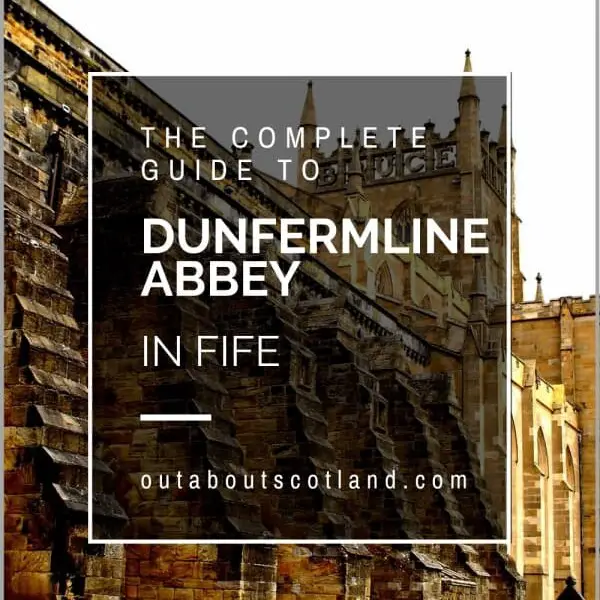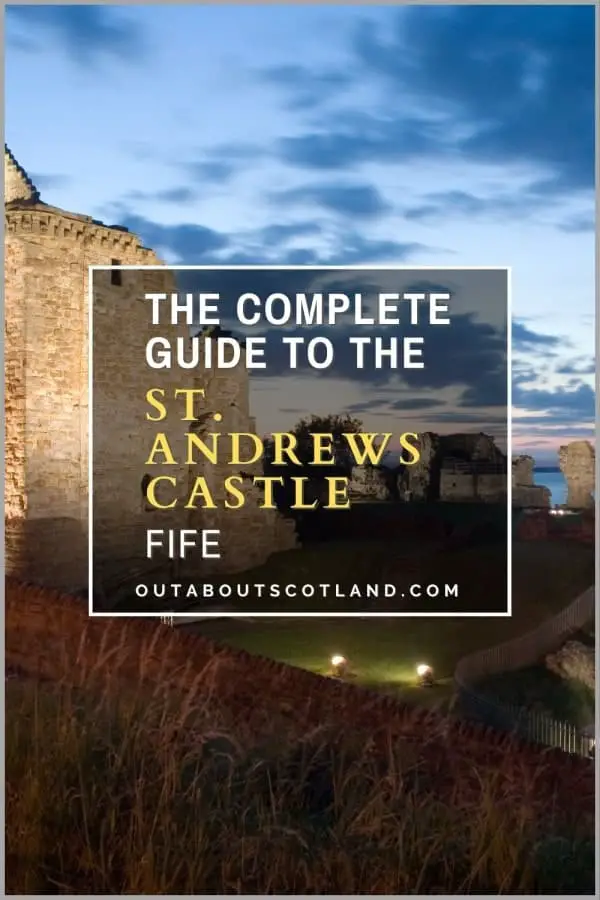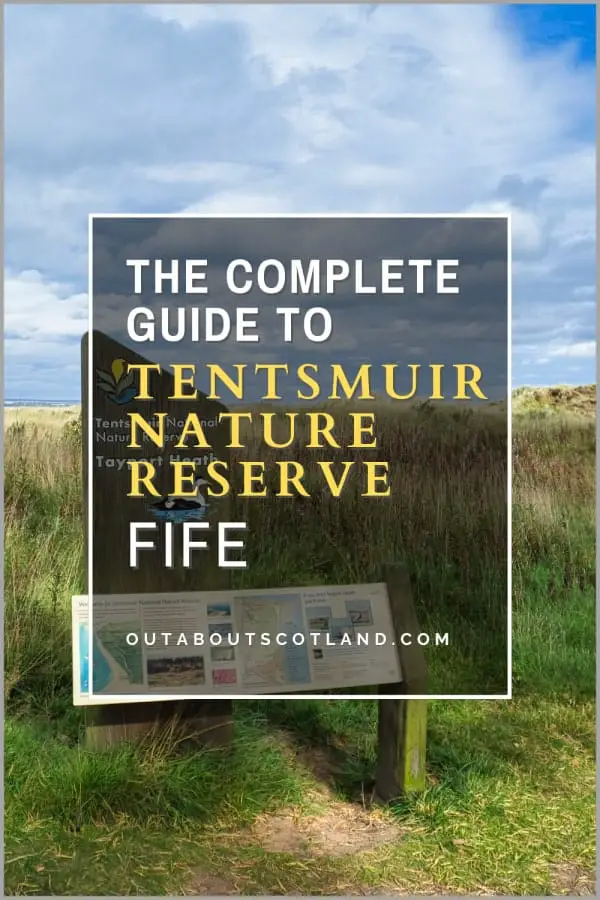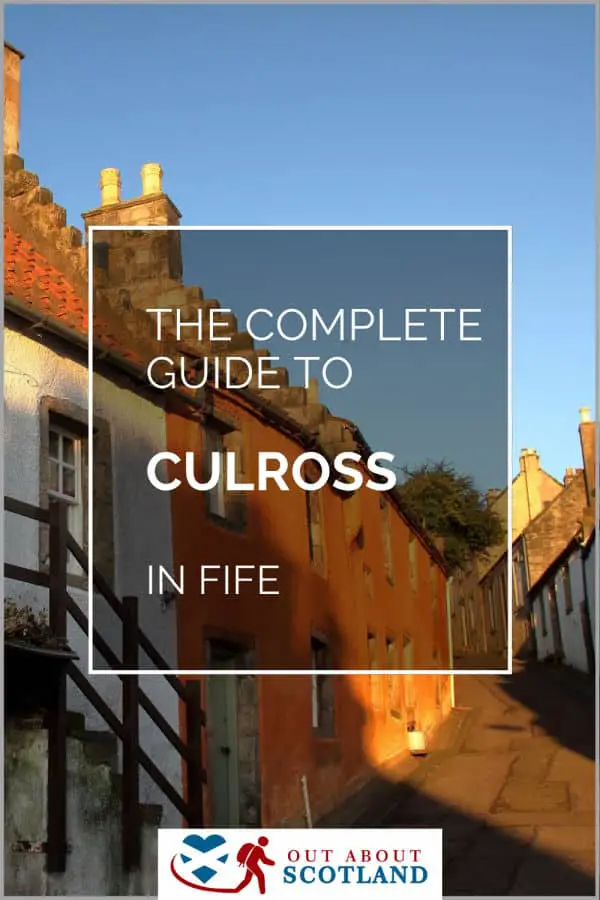From its humble beginnings as a priory, Dunfermline Abbey in Fife rose to prominence as the final resting place of Scottish royalty, including the legendary King Robert the Bruce. Today, its imposing architecture stands as a testament to the skill and artistry of the craftsmen who dedicated their lives to its creation.
Discover the impressive stained glass windows that adorn the abbey, marvel at the intricate details of the stone carvings, and step into the hallowed halls where kings and queens were crowned in this complete guide to Dunfermline Abbey.
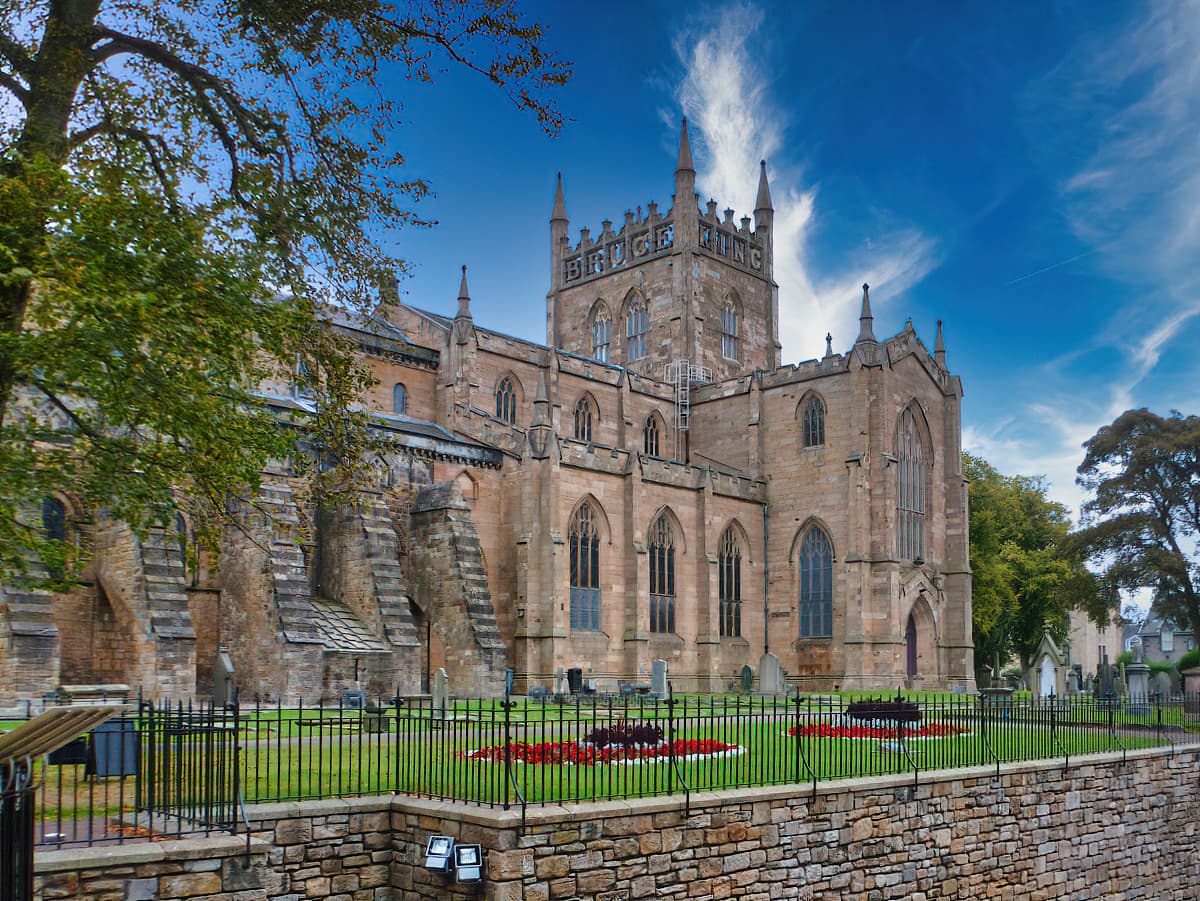
| Address: | St Margaret’s Street, Dunfermline, Fife, KY12 7PE |
| Opening Hours: | 1 May to 30 September: Monday to Saturday 10 am to 5 pm Sunday 1 pm to 5 pm Last entry 4.30 pm 1 October to 31 March: Daily 10 am to 4 pm except for Sunday and Monday Last entry 3.30 pm |
| Admission Price: | Adult £6 Concession £4.80 Child £3.60 Family Ticket £20 |
| Parking: | No on-site parking. Paid car parks in Dunfermline. |
| Contact: | 01383 739 026 |
| Facilities: | Gift shop, drinks machine |
Overview
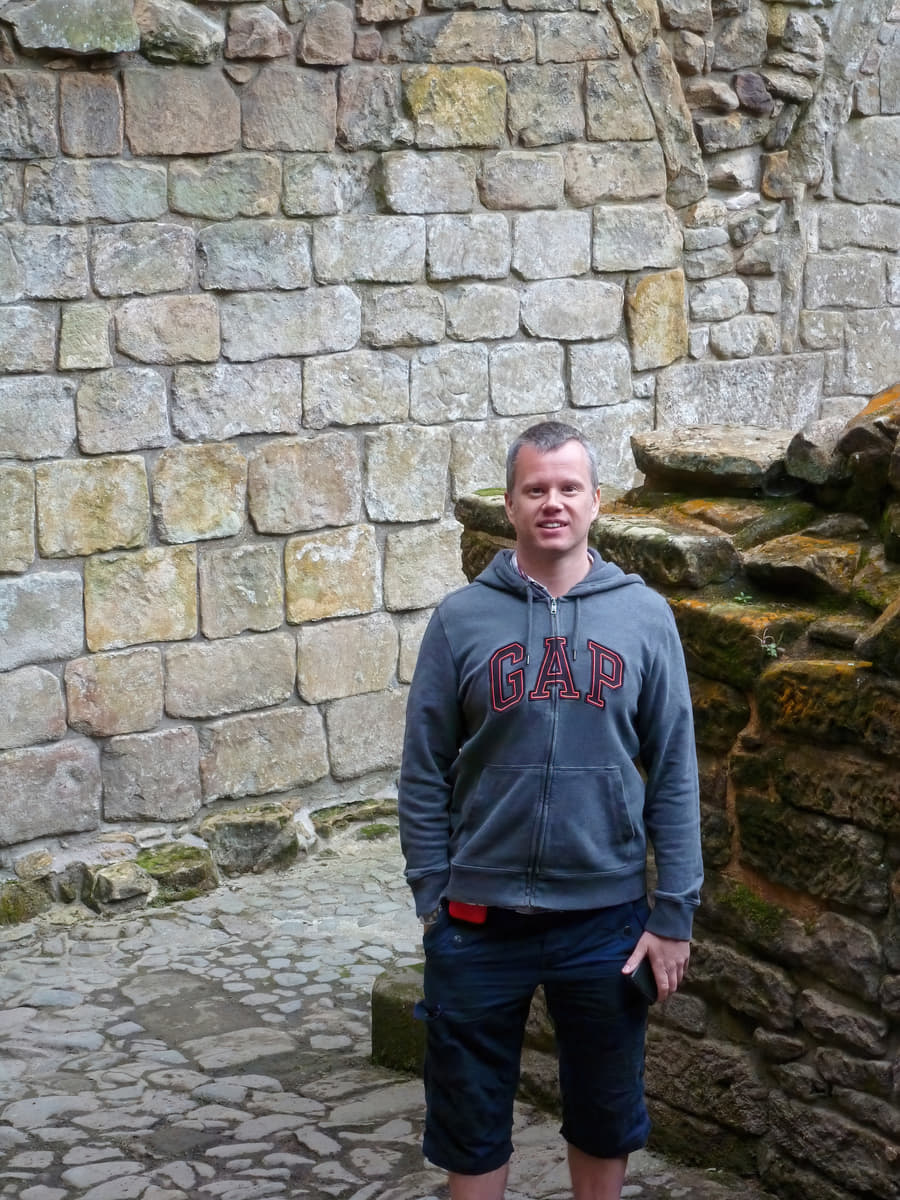
Dunfermline Abbey is a striking historical site in Fife that has foundations that date back to the 11th century and is notable for being the burial place of several Scottish monarchs, including Robert the Bruce. The Abbey and its adjacent palace ruins, maintained by Historic Environment Scotland, offer a fascinating glimpse into Scotland’s mediaeval past.
Dunfermline Abbey is a historic site that has a history stretching back almost as far as the history of Scotland itself. It’s at this 900-year-old abbey where many of Scotland’s greatest kings and queens were laid to rest, with prominent figures including Saint Margaret (wife of Malcolm III) and Robert the Bruce buried beneath the abbey grounds.
But it’s not just the inhabitants of the mausoleum that attract thousands of visitors each year, because this historic building is also renowned for its stunning architecture.
What started as a small priory in 1070 AD eventually became the grandest abbey in Scotland thanks to a continuous programme of improvements that began all the way back in the 12th century. Over the years, Dunfermline Abbey transitioned from a minor church into the magnificent structure we see today, thanks to King David I, who modelled it after the similarly impressive Durham Cathedral.
The massive Romanesque pillars inside the nave and the enormous buttresses encircling the exterior continue to astound visitors even today, and the abbey is now one of the most-visited attractions in the region.
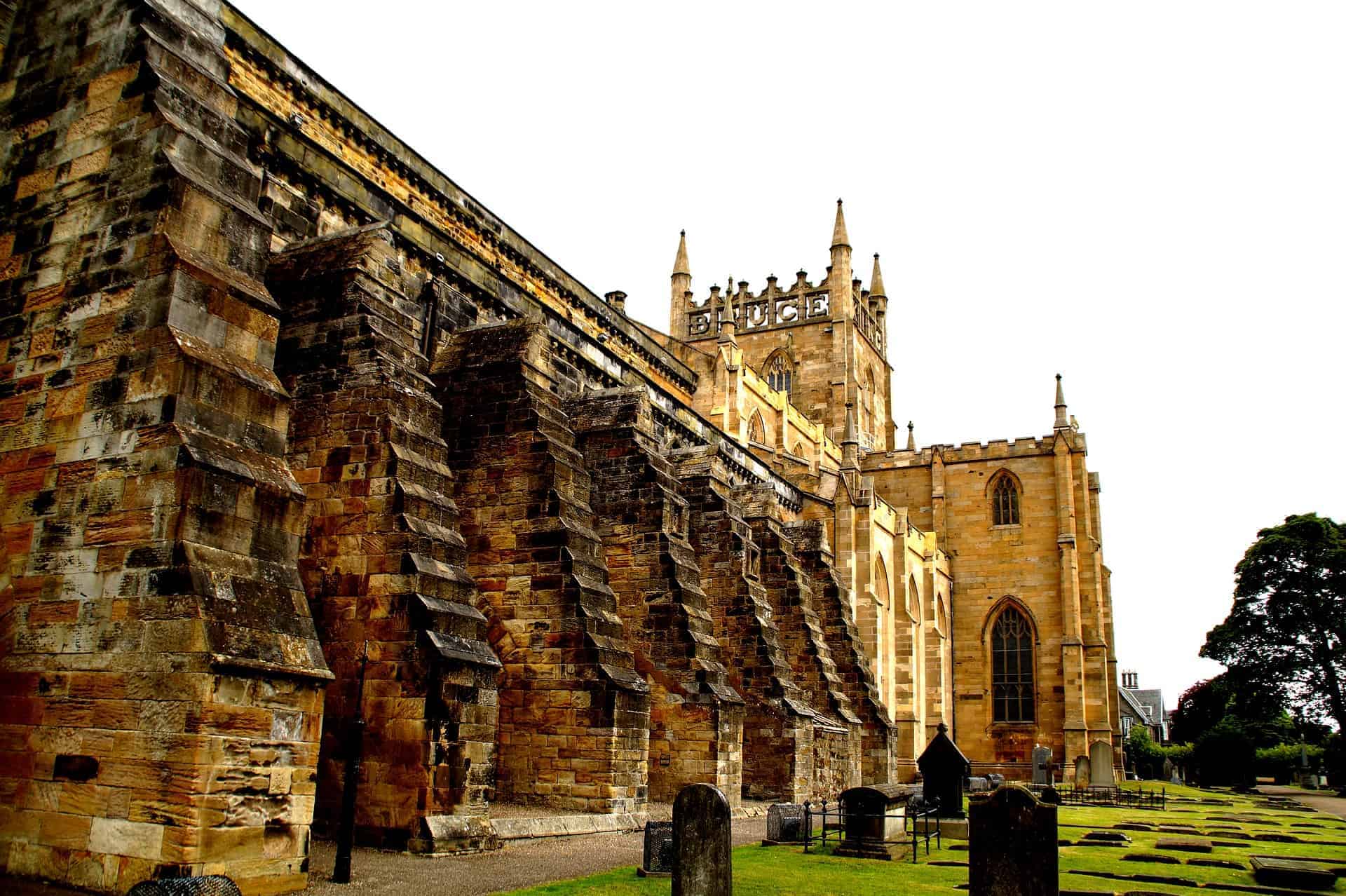
The Highlights
1: Dunfermline Abbey holds immense historical significance as the resting place of many Scottish monarchs, including Robert the Bruce. Visitors can explore the majestic royal tombs and gain insights into the lives and legacies of these influential figures.
2: The abbey’s architecture is a sight to behold. From the intricate stone carvings to the soaring Gothic arches, every corner of Dunfermline Abbey showcases the exquisite craftsmanship of its builders. One of the main highlights is the abbey’s stunning stained glass windows, which create a serene and ethereal atmosphere on a sunny day.
3: Set amidst beautifully landscaped gardens and parkland, Dunfermline Abbey offers a peaceful retreat from the bustling shops of High Street, yet it’s just a 5-minute walk from the city centre.
Visiting Tips
1: There aren’t any toilets in the cathedral, but there are lots of cafés with toilets on High Street as well as in nearby Pittencrief Park.
2: Dunfermline is a nice enough town, but after visiting the abbey, I recommend driving west on the A985 to explore the historic village of Culross instead. This attractive village is a tourist attraction in its own right and takes just 15 minutes to reach by car.
3: If you’d rather stretch your legs in Dunfermline you’ll find Pittencrieff Park nearby, which features a pavillion, a play park, landscaped gardens, and a cafe.
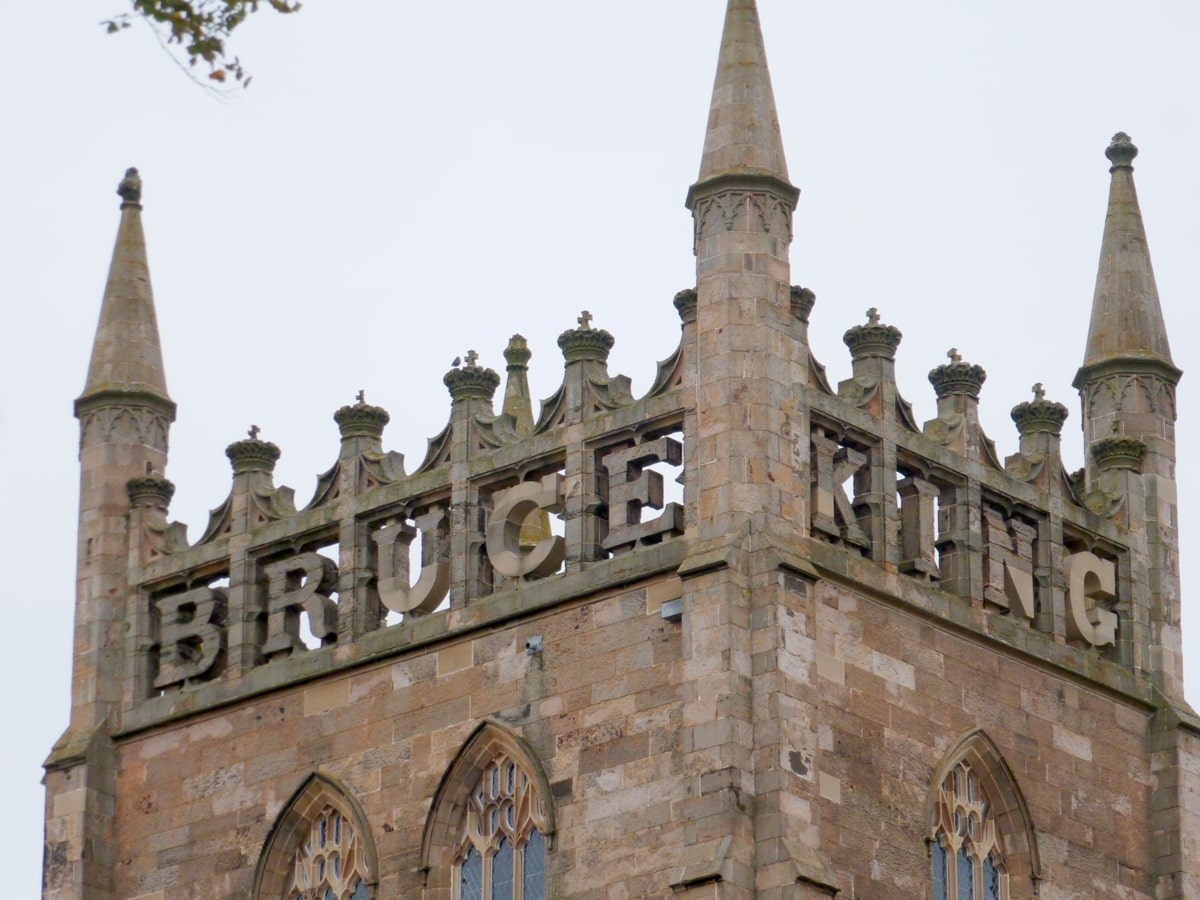
Tourist Information
The grounds surrounding the abbey are enormous and are home to a vast collection of tombs and gravestones, making them the best place to begin a tour of the site. After wandering around the graveyard, I recommend entering the nave to look up and gaze at the pillars and columns that tower overhead.
It’s amazing how mediaeval stonemasons managed to create such monumental buildings back in the day, especially Dunfermline Abbey, which still manages to impress visitors 900 years after its foundation stones were first laid.
More than 30,000 tourists visit this historical site each year, most of whom make a point of seeing the bronze floor plaque marking the location of Robert the Bruce as well as the elaborate shrine of St. Margaret which is located at the east end of the nave. Leaving the nave, you can head towards the gatehouse where you’ll see the ruins of the old monk’s refectory, while the nearby 76-acre Pittencrieff Park can be easily visited through a gate at the western end of the cathedral.
The park is well worth taking the time to visit as it has several attractions including a museum, a pavilion, and a peacock sanctuary. Entry to the park is free and the park is open year-round.
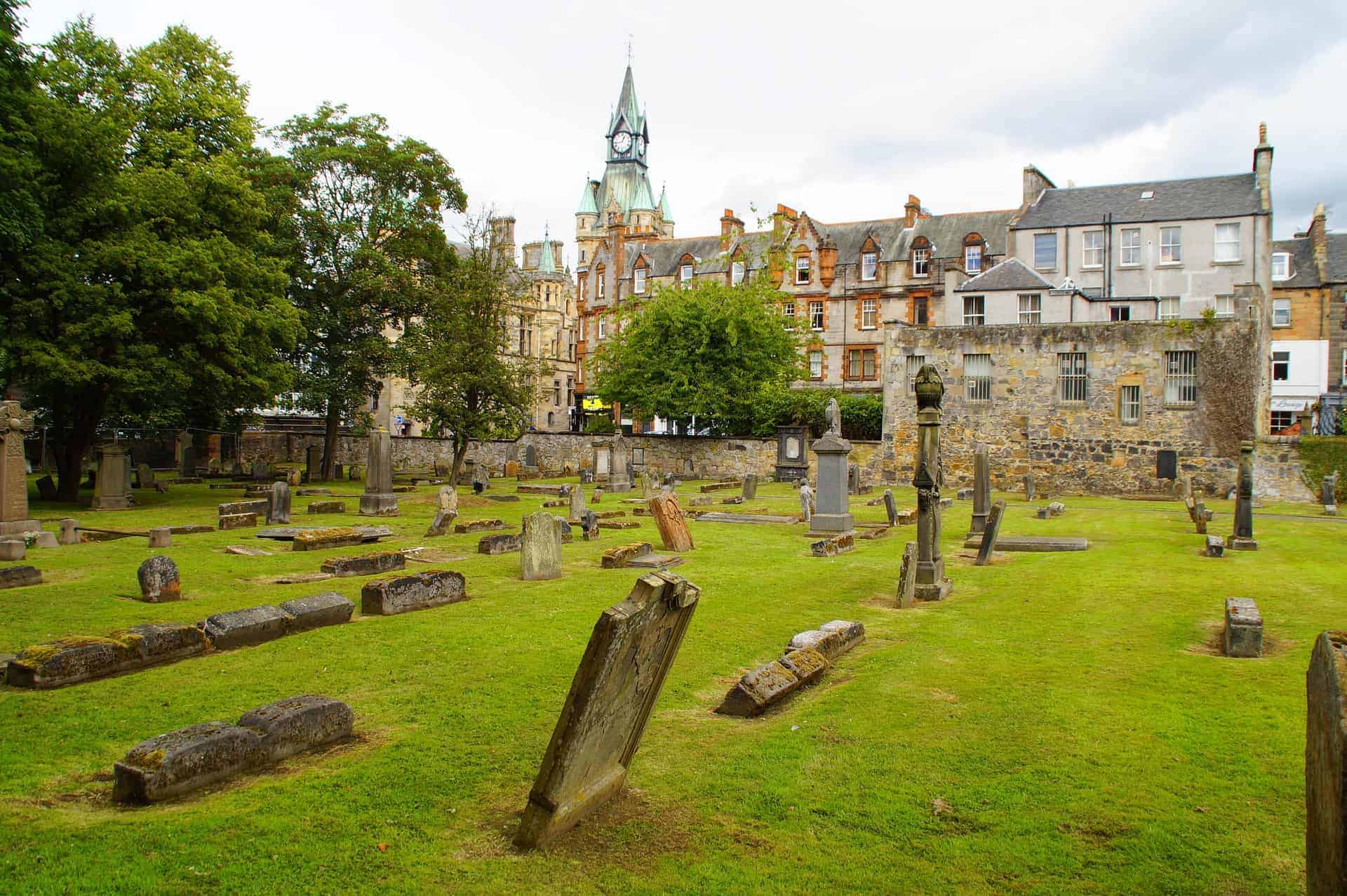
History
The priory that Malcolm III founded in the 12th century served as Dunfermline’s first place of worship, and it’s on top of this modest church that the present-day Dunfermline Abbey was built. It was actually Malcolm’s wife, Margaret, who introduced Benedictine monks to Dunfermline Priory, and after her death, her son, David I, began work to build a magnificent abbey that would rival any other in Scotland.
In 1250, the remains of Margaret (later to become Saint Margaret) were moved to a shrine at the eastern end of the abbey, which led to Dunfermline becoming the primary site for royal burials in later years.
Perhaps even more famous than Saint Margaret’s tomb is that of Robert the Bruce, who was interred there in 1329. King Robert had close ties to the abbey as he had personally overseen its reconstruction after it was damaged by Edward I during the Scottish Wars of Independence.
Unfortunately, the abbey was ransacked and almost destroyed during the Scottish Reformation in 1560, but thankfully, the nave was left unharmed. Although Dunfermline Abbey lost its status as a site of royal burials shortly after the Reformation (Iona Abbey was used instead), the nave continued to be used as a parish church right up to the present day.
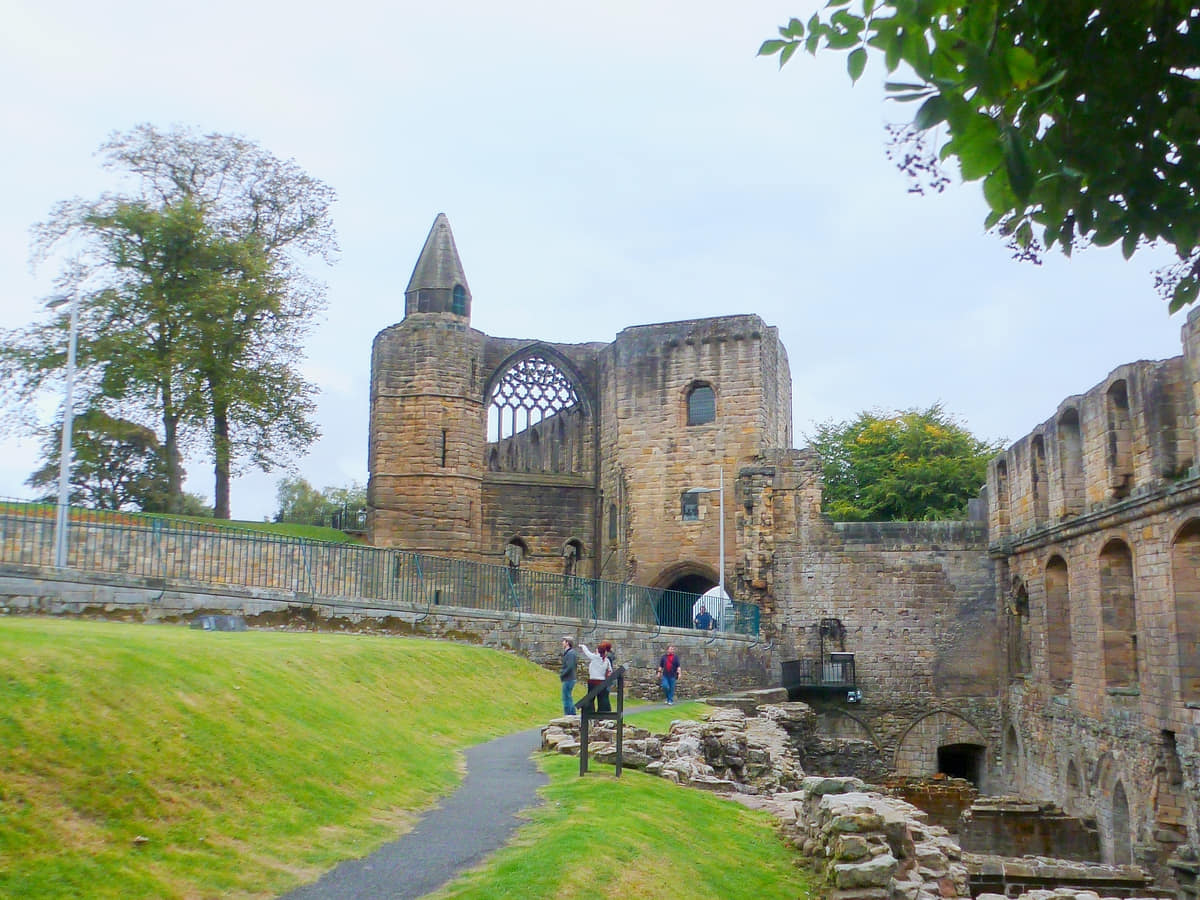
Things to Do
Visit the Abbey: The Abbey is an architectural marvel with parts dating back to the 12th century. Home to the tomb of Robert the Bruce, Scotland’s famous king, it’s a must-visit for anyone with an interest in history.
Explore the Abbey Nave. The Abbey Nave is a beautiful example of Romanesque architecture. Marvel at the detailed stone carvings, the towering pillars, and the beautiful stained glass windows. The Nave is also home to a collection of mediaeval grave slabs and historical artefacts.
Explore Dunfermline Palace: Discover the rich history of Scotland by exploring Dunfermline Palace, a former royal residence that’s part of the Dunfermline Abbey complex. Walk through the ruined halls and rooms and learn about the lives of the nobility that once called it home.
Walk through the Historic Grounds: The area surrounding Dunfermline Abbey is filled with beautiful gardens and parks. Pittencrieff Park is well worth a visit, as it features lots of footpaths, greenhouses, a pavilion, a cafe, and a children’s play park.
Visit the Church: The parish church is part of the abbey complex and is open to visitors to explore as part of a self-guided tour, though visitors should note that it’s still an active place of worship so access might not be possible on certain days.
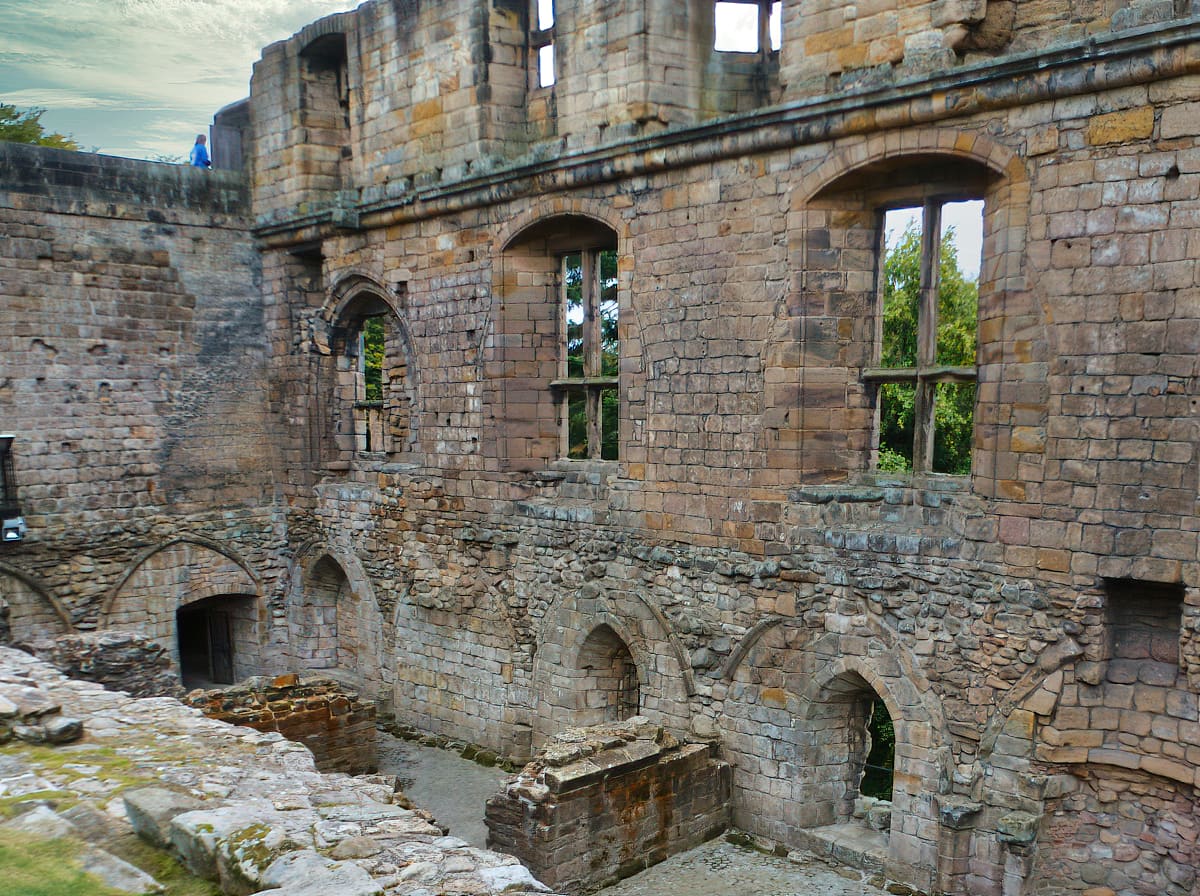
Things to Do Nearby
Pittencrieff Park. Pittencrieff St., Dunfermline, KY12 8QH. 1-minute walk.
An extensive public park with a spiderweb of footpaths through managed lawns and coppices. The park includes children’s play areas, a pavilion, several memorials, a peacock sanctuary, and more.
Dunfermline. 2-minute walk.
Historic Dunfermline offers several local shops, cafés, pubs, and restaurants on its high street, which is an easily accessible walk from the abbey.
Andrew Carnegie Birthplace Museum. Moodie St., Dunfermline, KY12 7PL, is a 4-minute walk.
A museum is dedicated to the entrepreneur Andrew Carnegie, who was born in Dunfermline but later moved to America to become the world’s richest man. The museum features original artefacts as well as displays of 19th-century life in Dunfermline.
Abbot House, 11 Maygate, Dunfermline, KY12 7NE, is a 2-minute walk.
A local centre for Dunfermline history and heritage. This historic building aims to preserve the story of the town and its people with a collection of archives, exhibits, and displays. There is a café and a microbrewery on-site.
Pittencrieff Glasshouse, Dunfermline, KY12 8QH, is a 2-minute walk.
A large, refurbished glasshouse that is over 200 feet long. The glasshouse contains a variety of exotic plant species from across the globe. The front of the glasshouse features ornamental gardens and flower borders.
Frequently Asked Questions
Is Dunfermline Abbey worth visiting?
Dunfermline Abbey is definitely worth visiting, especially if you have an interest in history and architecture. Located in Dunfermline, Fife, the abbey contains more than 900 years of history and is considered one of the most historically significant sites in Scotland.
The abbey is renowned for its beautiful stained-glass windows and the grounds of the abbey are equally remarkable, featuring beautiful gardens and a historic graveyard that’s the final resting place for many Scottish nobles.
What is Dunfermline Abbey famous for?
Dunfermline Abbey in Fife is famous for being the grave site of several of Scotland’s kings and queens, including Robert the Bruce, St. Margaret, David I, and Robert I.
Dunfermline Abbey has more royal graves than anywhere else in Scotland, except for Iona Abbey.
Is Dunfermline Abbey free?
The abbey and nave are open to visitors free of charge. Visit the Historic Environment Scotland website for the current opening times.
When was Dunfermline Abbey destroyed?
During the Wars of Independence in AD 1303, English troops partially destroyed Dunfermline Abbey. Protestants also sacked it in 1560, after which it fell into ruin.

